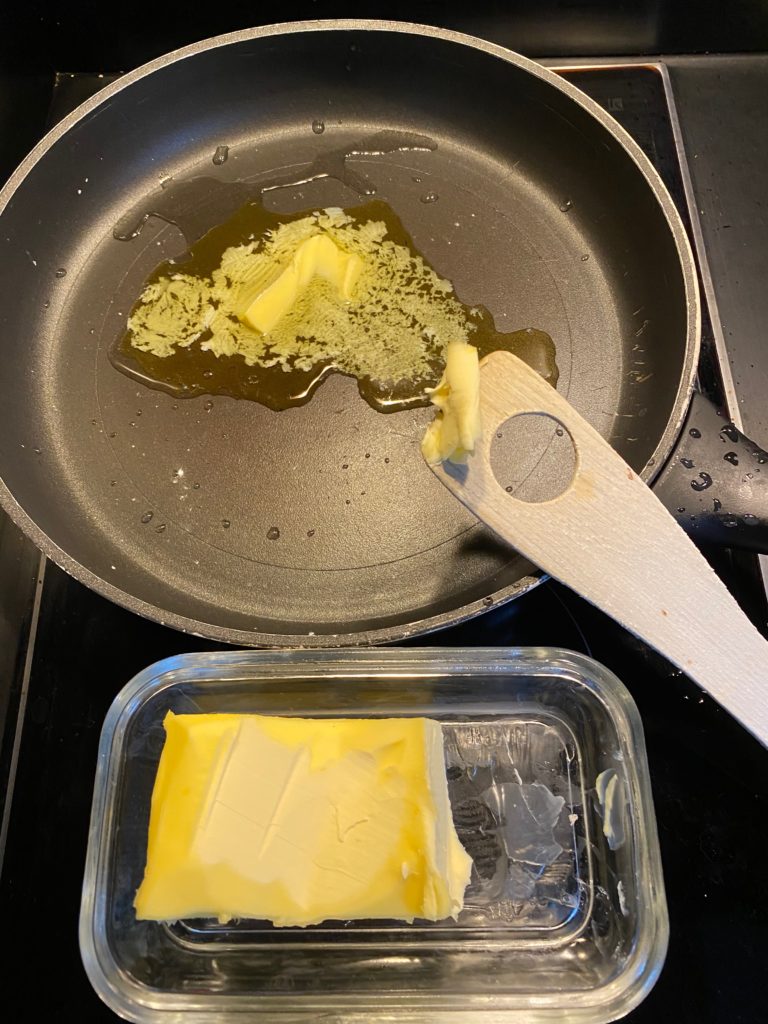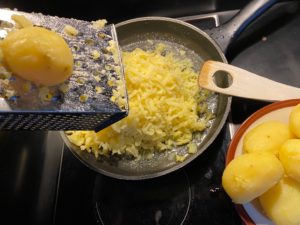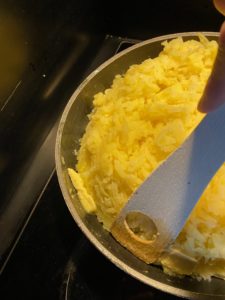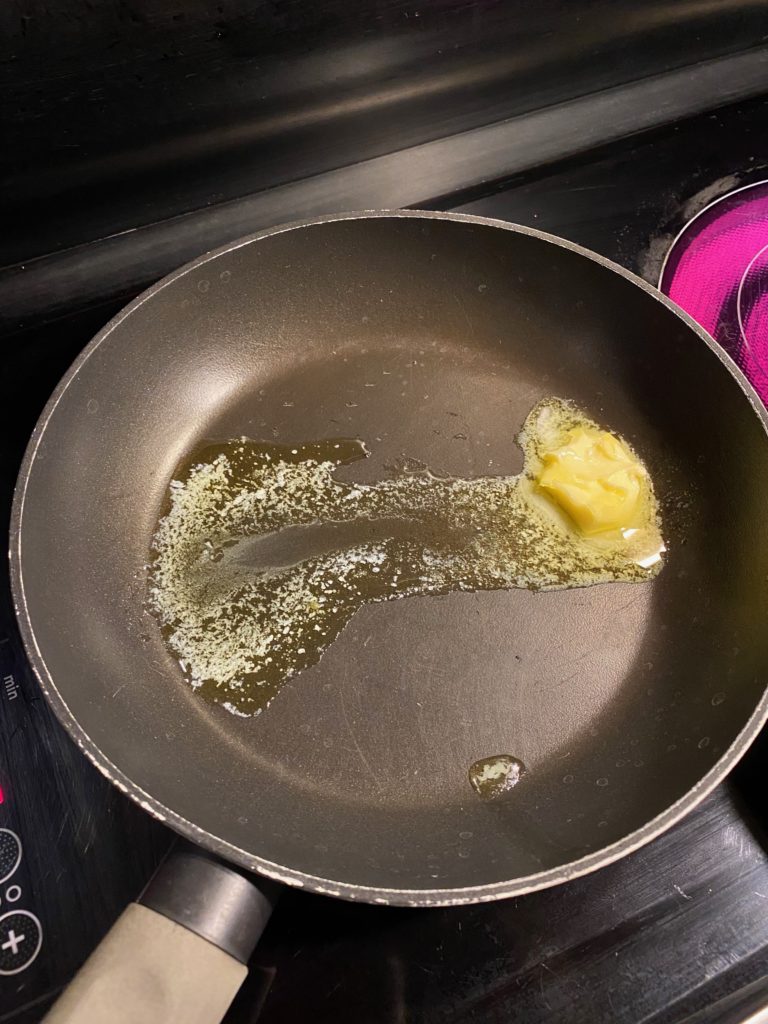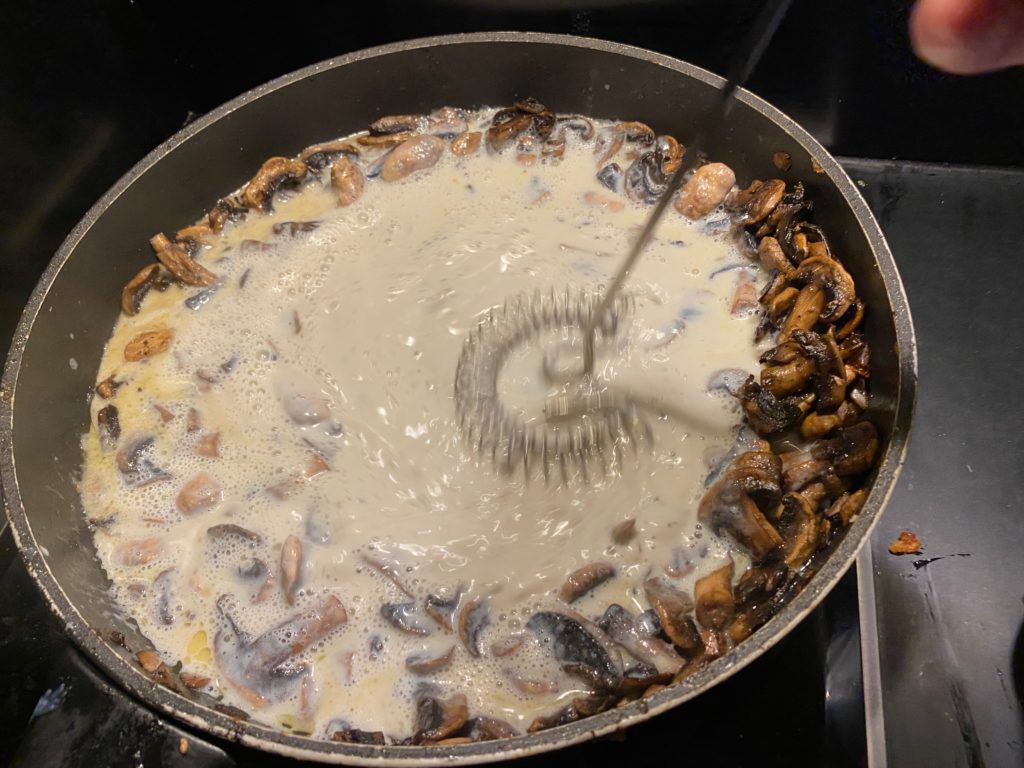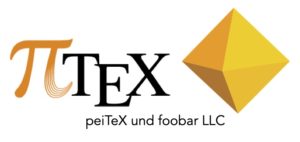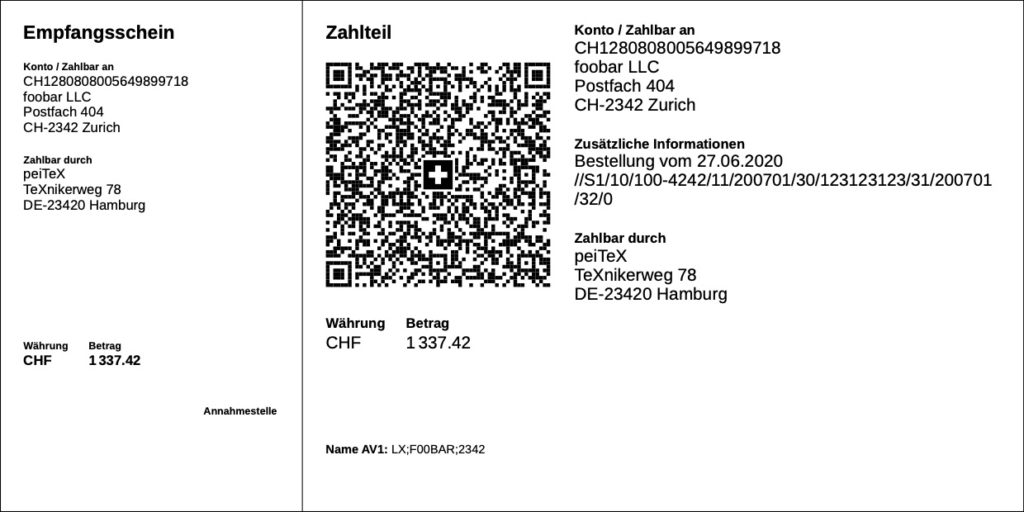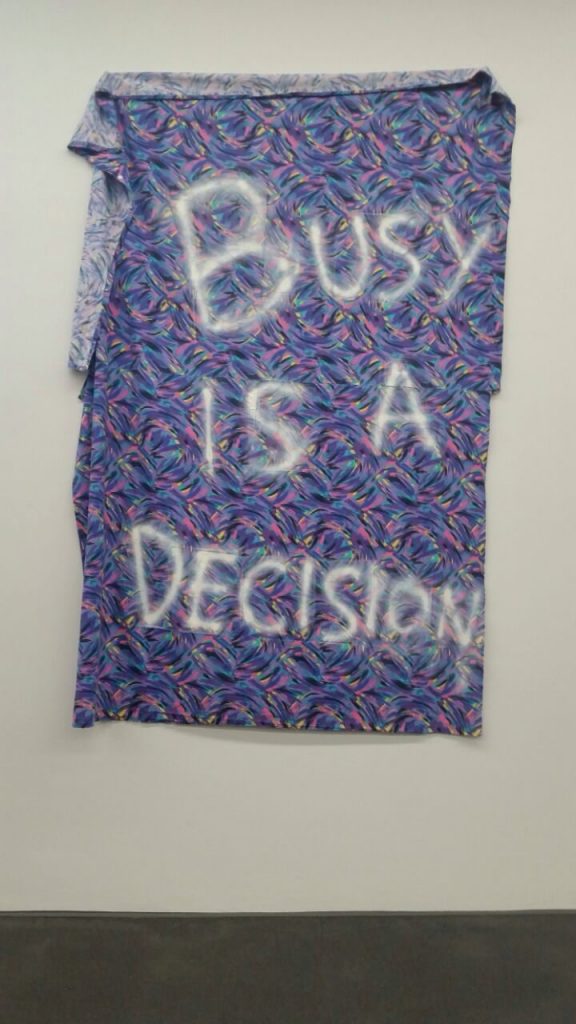How to bake a swiss “Rösti”
The swiss Rösti is a traditionally dish, cooked with slivers of veal and a cream sauce with mushrooms. Here is a simple howto and recipe, that is Licensed under GFDL 1.2 & CC-by-sa 3.0.
- 2 kg of “waxy”, firm potatoes
- 80 g butter
- salt
- diced bacon (if you like)
- eggs (for additional fried egg)
The day before cooking Rösti, prepare by boiling raw, paddy potatoes and put them into the fridge over night. This way the potatoes are easier to peel, get stronger starch bond and the Rösti won’t get stroppy.
Start melting 30g of butter in a pan on medium heat. Take the potatoes out of the fridge and peel them.
Grate the potatoes directly into the pan over the melted butter, without compacting to keep it fluffy. Occasionally add salt over the first layer.
Add a few butter flakes around the border of the pan, slighly press the border of the Rösti and cover the pan, while adding full heat. Let the Rösti gently roast for about 10-12 minutes.
Turn the pan around with the aid of a cover or a plate. Repeat roasting the other side by adding butter again, sliping the Rösti into the pan again, adding some flakes of butter arount the pan again and covering it.
enjoy 😉
[Update] Sauce recipe
Prepare mushrooms, onion, butter, milk and the meat of your choice, usually sliced veal.
Cut the onions into cubes, the mushrooms and the meat into slices. melt 20g of butter in a pan.
Fry onions, then add the meat, roast it well, then remove it and put it aside.
sweat the mushrooms, you can stimulate them with a bit of salt. Once done, add 10-20g of butter in the middle, add a bit of flour and start pouring milk into the pan, while whisking the sauce.
Add the meat again, mix everything and season the sauce to taste with pepper and salt.
enjoy! 😉
